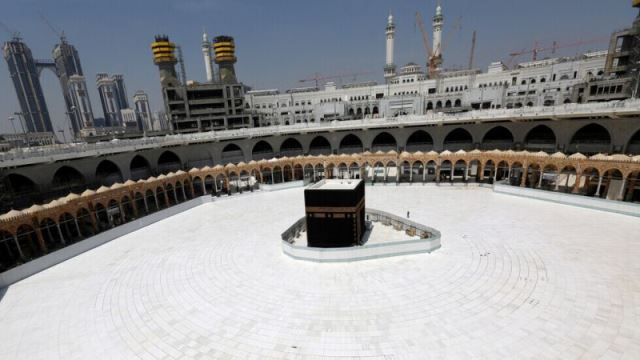
Cairo "Almasalla News "- Being a tourist in India is not easy. Travel is no fun and it empties out the pocket. It does not matter if the tourist is home-grown — travelling within the country to see sights and visit temples — or the foreign tourist who wants to ‘experience’ India.. Both varieties invariably get an experience they’d rather forget but can’t.
Tourism here is a rip-off. The idea is to dip into the pocket without offering anything close to value either in facilities or services, both based on huge profits fuelled by the philosophy: “Where else can the tourist go? Mulct him.”
It is not just the private sector alone that does this. Even government-run arrangements — and each state has its own wing devoted to tourism ‘promotion’ – are bureaucratic and unimaginative as they are. Their creativity stops at attractive brochures and advertisements.
Tourists cruise along Dal Lake taking photos October 4, 2008 in Srinagar, Kashmir. Getty Images
It starts from poor bus stands to filthy railway stations and stinking train toilets to their total absence on the highways. The only redeeming aspect is the plethora of flights and a few improved airports.
Let me illustrate with three assorted examples I faced over the years.
One, when travelling from Agra to Bharatpur, the driver just stopped in the nick of time or else the huge crater would have swallowed the car to its roof and another could have driven over us without finding anything amiss.
Two, in Ooty, getting off the bus from Coimbatore meant stepping straight into a puddle inside the bus stand. While strolling around the town in the evening, there was danger of falling off into a ditch on the side because the roads were not lit.
Three, at the Gateway of India, one had to risk a limb or a fall into the brine when boarding a launch to Elephanta. This is also true when boarding a boat to the Bet Dwarka. And once in Elephanta, the tourist has to fend off the menacing monkeys which swarm the place.
Now some more: I have spent nights in state tourism operated inns — they call them guest houses — to be had at moderate prices, but they are awful. At one place in Gujarat, the toilet door was missing. The road to Bhandardara from the highway was so bad that three of the four suspensions of the car had to be repaired before returning.
The roads, bus stands and railways which fall under government domain and are supposed to be facilitators for the growth of tourism. But they have failed. While many were set up as corporations, to ensure that they don’t, they remain a babu’s enterprise.
The wonder is, in spite of this lackadaisical attitude, tourist arrivals in India have grown — from 14.4 million in 2009 to 17.9 million in 2010 — fetching the country $14 billion. Though the cost for travelling say Mumbai-Delhi-Agra-Bharatpur is higher than visiting Bangkok, domestic tourism is also on the uptick.
For this, the government which looks to tourism as a dollar-earner and job-provider in an increasingly service-oriented economy has to only thank the forebearance of tourists. It has no cause to thump itself on the back, as it has done precious little — making attractive brochures and providing an excuse to tourism officials to travel overseas to, well, promote tourism. The outcome, at best, is disorganised and to put it mildly, not tourist-friendly.
Some years ago, a Middle-East Egyptian consular official in Mumbai put it nicely. Had it not been for an official assignment, he would not have been interested in being a tourist in India. He found everything in the tourism sector a mess and listed them.
For one, it was incorrectly assumed that every overseas visitor was loaded with dollars, and that the middle class and backpackers were not human beings enough to be treated well. Not all five-star tourists stay at the Taj. When they foray out to ‘experience’ India, they and the grubby Indian travellers face the same travails.
“Take, for instance, the restaurants where authentic Indian cuisine is available. Once consumed, terror awaits the tourist; the washbasin is filthy, the towel worse. The restrooms are a terror and a shame.” Public toilets are non-existent. “They don’t have strong kidneys but have a better sense of decorum than to lean against the nearest wall.” And clean public toilets are so rare, you can forget them.
A ticket booked from an overseas location costs more; they are dollar-paid tickets. Once in, at every tourist location the entry charge is several times higher than what an Indian pays, again indicating that the dollar in the pocket is the target, not offering anything as a value add. Even the guides are bogus. They prattle off details and when asked a question, they are stumped.
Everything is a rip-off.
“Everything is incorrectly prioritised,” the diplomat lamented, suggesting that Indian tourism officials visit overseas not to promote visits to India but to “learn tourism”. Other countries, like Switzerland, have made tourism the mainstay of their economies. India is nowhere, despite the abundance and lure of its heritage.
One can’t fault the diplomat for that is the bare boned truth about Indian tourist spots.
While an Indian travels within the country aware of the limitations, a foreign tourist comes seeking an experience. And, what an experience he gets! From touts to beggars to unkempt places.
It is no wonder then, that only one per cent of all tourists worldwide come to India — which earns only two percent of all tourism income.
We may get the tourist’s dollar, but we most surely don’t get his gratitude.
Source : FIRSTPOST ECONOMY







